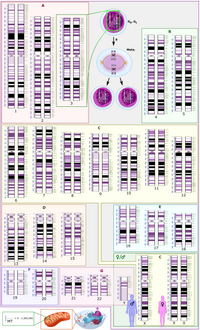
Photo from wikipedia
Whole genome sequencing (WGS) of important foodborne pathogens is a technology under development, but is already employed in routine surveillance by public health agencies and is being increasingly exploited in… Click to show full abstract
Whole genome sequencing (WGS) of important foodborne pathogens is a technology under development, but is already employed in routine surveillance by public health agencies and is being increasingly exploited in tracing transmission routes and identifying contamination events (source tracking) that take place in the farm-to-fork continuum. Furthermore, data generated from WGS, complemented by other -omics data, have the potential to be integrated into and strengthen microbiological risk assessment. In this paper, we discuss the contribution of WGS in diverse areas important to food safety and public health. Additionally, an outlook of future WGS applications, which should contribute to our understanding of the ecology and physiology of foodborne microorganisms, is presented.
Journal Title: International journal of food microbiology
Year Published: 2018
Link to full text (if available)
Share on Social Media: Sign Up to like & get
recommendations!